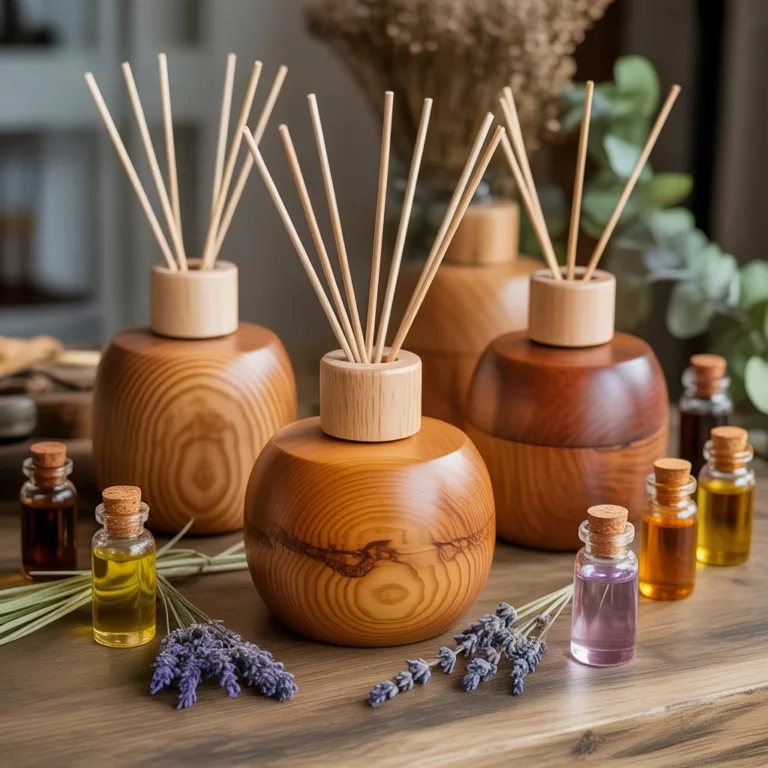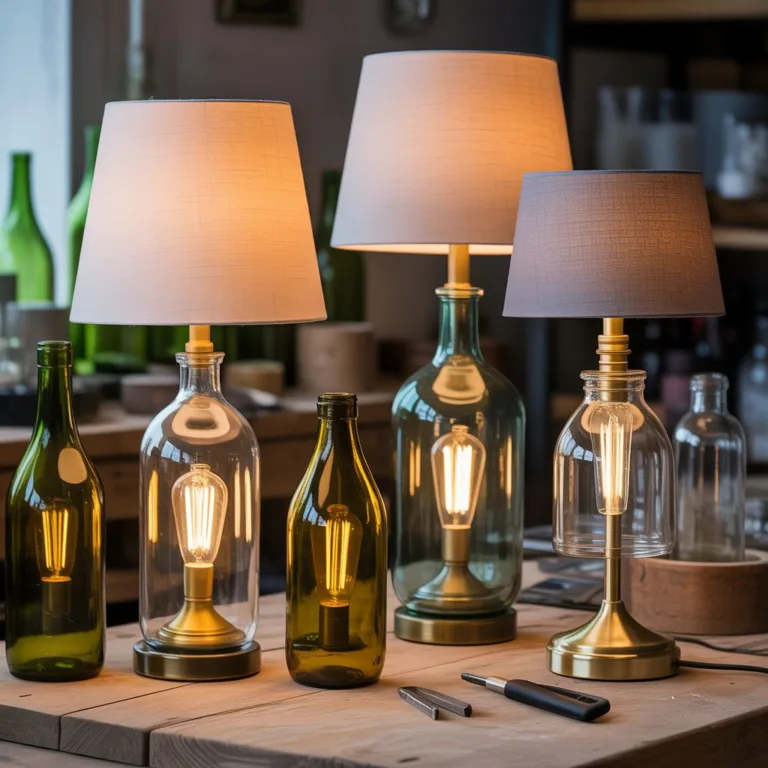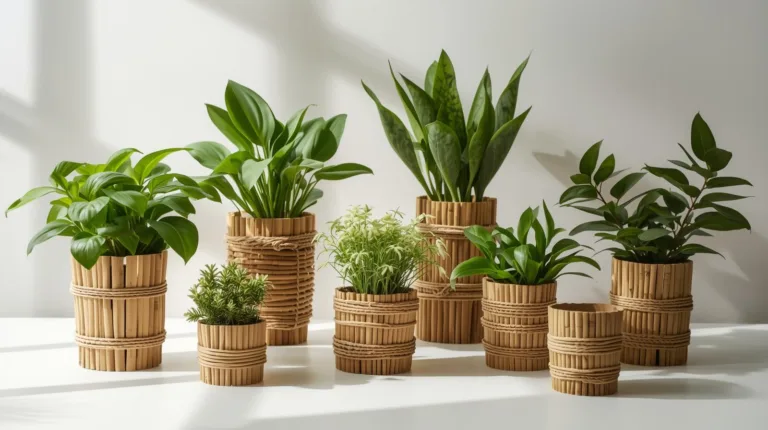The warm flicker of candlelight has always held a special place in creating peaceful, comforting spaces. Whether it’s for a relaxing evening, meditation, or simply enhancing the atmosphere of a room, candles evoke a sense of calm and intimacy. Yet, many traditional candles contain synthetic fragrances and paraffin wax, which release pollutants and harm indoor air quality. In contrast, eco-friendly candles offer a cleaner, sustainable alternative that aligns beauty with responsibility.

Creating a cozy ambience with eco-friendly candles goes far beyond decoration. It’s a mindful practice that integrates sustainability, wellness, and craftsmanship. From selecting natural waxes and wicks to experimenting with essential oils and recycled containers, this art invites creativity while respecting the environment.
The Essence of Candlelight and Comfort
Candles are more than light sources; they’re emotional anchors. Their soft, rhythmic glow engages the senses, easing the mind and fostering moments of reflection and connection. In home design, candlelight adds depth, dimension, and intimacy, transforming even simple spaces into serene retreats.
However, achieving true comfort also means ensuring the air we breathe remains clean. Paraffin candles, derived from petroleum, emit soot and toxins like toluene and benzene when burned. Eco-friendly candles, on the other hand, use natural ingredients that minimize indoor pollution and promote well-being.
By crafting or selecting sustainable candles, you create warmth that’s both physical and emotional — light that soothes without compromise.
What Makes a Candle Eco-Friendly?
Eco-friendly candles are defined by their low environmental impact, from production to burning. Every component — wax, wick, fragrance, and container — contributes to sustainability.
1. Natural Wax Bases
Sustainable candles use renewable, biodegradable waxes such as:
- Soy wax: Derived from soybeans, it burns slowly and cleanly, with minimal soot.
- Beeswax: A natural byproduct of beekeeping that emits a soft honey scent and purifies the air by releasing negative ions.
- Coconut wax: Made from cold-pressed coconut oil, it’s smooth, long-lasting, and vegan-friendly.
- Rapeseed (canola) wax: A European alternative with a small carbon footprint and excellent scent retention.
Each wax has unique qualities, but all share the same principle — sustainability without sacrificing performance.
2. Natural or Organic Wicks
The wick determines how efficiently a candle burns. Eco-friendly options include:
- Cotton wicks free from lead or zinc.
- Wooden wicks made from FSC-certified wood that crackle gently as they burn.
- Hemp wicks, known for durability and even burning.
These wicks reduce smoke and ensure the flame remains stable and consistent.
3. Clean Fragrances and Essential Oils
Instead of artificial fragrances containing phthalates or synthetic stabilizers, sustainable candles rely on essential oils extracted from plants. These not only smell wonderful but also support relaxation and mood balance. Lavender, eucalyptus, rosemary, and citrus oils are among the most popular choices for natural aromatherapy candles.
4. Recycled or Reusable Containers
Glass jars, ceramic cups, tin cans, or even coconut shells make beautiful, reusable containers. Choosing recycled materials reduces waste and adds a creative, personalized touch to each candle.
Crafting Your Own Eco-Friendly Candles
Creating eco-friendly candles at home is a fulfilling activity that blends sustainability with self-expression. It allows you to experiment with fragrances, colors, and styles while controlling the quality of materials.
Start by choosing your wax base, then select a container suited to the aesthetic you want — rustic, minimalist, or elegant. Use a double boiler to melt the wax gently, avoiding overheating, which can affect scent and texture. Once melted, mix in essential oils for fragrance and pour the wax carefully into your chosen mold or container, securing the wick in the center.
For color, use natural pigments or powdered herbs such as turmeric, spirulina, or beetroot powder. These subtle hues bring individuality and harmony without synthetic dyes.
The result is a handmade candle that carries your personal energy and intention — one that lights up both your room and your environmental consciousness.
The Art of Scent and Mood
Fragrance plays a central role in how we perceive warmth and comfort. By using essential oils in eco-friendly candles, you can tailor the mood of a room naturally.
Here are some combinations to inspire your creativity:
- For relaxation: Lavender, chamomile, and sandalwood create a calming aura.
- For energy and focus: Peppermint, lemon, and eucalyptus sharpen the senses.
- For warmth and comfort: Vanilla, cinnamon, and clove evoke cozy evenings.
- For clarity and purity: Sage, cedarwood, and rosemary promote freshness.
Blending scents allows you to design personalized olfactory experiences. Because essential oils are concentrated, only a few drops are needed to infuse your space with natural fragrance.
Reusing and Repurposing Candle Containers
Sustainability doesn’t stop when the candle burns out. Reusing containers is a simple way to extend their life and reduce waste.
Once the wax has cooled and hardened, place the container in the freezer for an hour. The remaining wax will contract and can easily be removed. Clean the container with warm, soapy water, and it’s ready for a new purpose.
Ideas for reusing candle jars include:
- Plant pots for succulents or herbs
- Holders for pencils, makeup brushes, or utensils
- Storage for small accessories
- New candle refills
Each reuse reinforces a sustainable cycle — transforming waste into new function and form.
Enhancing Interior Design with Candlelight
Candles are versatile décor elements that can transform both ambiance and mood. The soft flicker of light interacts beautifully with textures and shadows, bringing warmth and depth to any space.
1. Creating Layered Lighting:
Combine eco-friendly candles with lamps and natural light sources to design layered illumination. Use larger candles as focal points and smaller tealights for accents.
2. Seasonal Aesthetics:
In colder months, choose warm-toned holders — amber glass, dark ceramics, or bamboo. For summer, opt for lighter materials and fresh scents like citrus or lemongrass.
3. Centerpieces and Wall Accents:
Group candles of different heights and diameters on trays or wooden boards for dining table centerpieces. For wall art, hang small candle holders in geometric patterns or upcycled jars for a rustic appeal.
4. Aromatic Zones:
Distribute different scented candles around your home to create distinct sensory zones. For instance, lavender in bedrooms, citrus in kitchens, and cedarwood in living areas.
Incorporating candles into home design brings both harmony and personality — and when they’re eco-friendly, they illuminate your values as much as your space.
The Science Behind Candle Ambience
What makes candlelight feel so comforting? Psychologically, warm light (around 1,800–2,000 Kelvin) mimics sunset tones that trigger relaxation in the human brain. The soft flicker stimulates the parasympathetic nervous system, reducing stress and slowing breathing.
Natural waxes enhance this effect because they burn cleaner, allowing the scent and visual experience to remain pure. Beeswax, for example, emits negative ions that bind to dust and allergens, improving air quality. Coconut and soy wax produce little to no soot, ensuring the air stays fresh.
When combined with calming essential oils, eco-friendly candles become a holistic tool for mental well-being — a blend of sensory, psychological, and environmental benefits.
Candle-Making as an Educational or Group Activity
Crafting eco-friendly candles can also serve as a powerful educational tool. It teaches not only creativity but also science, sustainability, and collaboration.
In classrooms, workshops, or community programs, participants can explore:
- The chemistry of melting points and solidification.
- The environmental impact of petroleum-based products.
- The importance of recycling and reusing materials.
- Cultural traditions around candle-making and light rituals.
Such activities combine hands-on learning with ecological awareness, fostering an appreciation for both art and responsibility.
Candle Safety and Sustainability Practices
Even sustainable candles require mindful use. To ensure both safety and longevity, follow these practices:
- Trim wicks to about 0.5 cm before each burn to prevent soot buildup.
- Avoid burning candles for more than four hours at a time.
- Keep them away from drafts, fabrics, and flammable surfaces.
- Use a snuffer or lid to extinguish rather than blowing, which can scatter soot.
- Recycle or repurpose every component after use.
Choosing candles from transparent, ethical producers also supports fair labor and environmentally conscious supply chains.
Creating Rituals of Light
Lighting a candle can be an act of mindfulness. It marks a transition — from work to rest, from noise to silence, from distraction to presence. When your candle is made of eco-friendly materials, this simple ritual takes on a deeper meaning. It becomes a daily reminder of your connection to nature, of the energy cycles that sustain both life and light.
Whether you use it for meditation, dining, or creative focus, the glow of a sustainable candle encourages slowness and intention. Its scent can evoke memories, balance moods, or simply remind you to breathe deeply.
In a world of artificial brightness and constant stimulation, candlelight invites a gentler rhythm. It encourages living not just sustainably, but mindfully — one flame at a time.
The Glow of Responsibility and Beauty
Crafting or using eco-friendly candles embodies a quiet revolution. It challenges the disposable culture and replaces it with appreciation, patience, and care. Every detail — the choice of wax, the scent, the container — reflects a value: respect for nature, simplicity in living, and joy in creating.
As you light your next candle, notice the way its flame dances and the scent lingers. These are not mere sensory pleasures; they are small acts of harmony between you and the environment. By choosing eco-friendly options, you help illuminate a path toward a cleaner, warmer, and more sustainable world.
Let your candlelight be more than ambience — let it be awareness.

Lucas Hartman is a DIY enthusiast and sustainability advocate focused on natural crafts and eco-friendly home décor. With a background in arts and design, Lucas creates tutorials that help families and hobbyists transform everyday recycled or organic materials into beautiful, functional projects.



